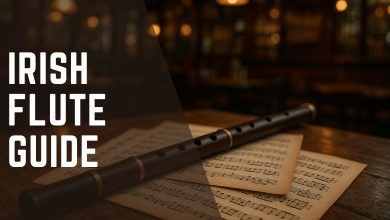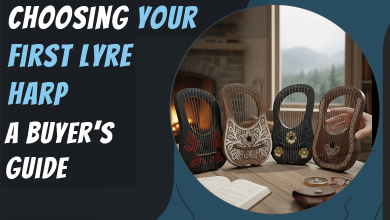Let’s Discover Harps With Their Shapes and Traits!
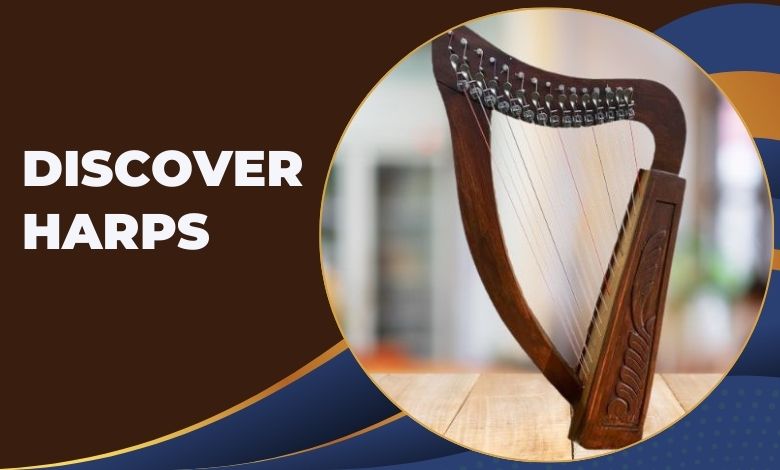
A harp is a musical instrument with multiple strings to produce different sounds. Plucking the strings with fingers produces the sounds of the harp. Each string produces a different pitch, allowing for a wide range of musical notes. Harps are common in Scotland where people prefer playing harps in their traditional attires, the kilt outfit. This instrument has further types including lyre, pedal, lap, Celtic harps, etc. This article will tell you about the features and shapes of these harps but first, let us have a detailed overview of the harp itself.
What is a Harp?
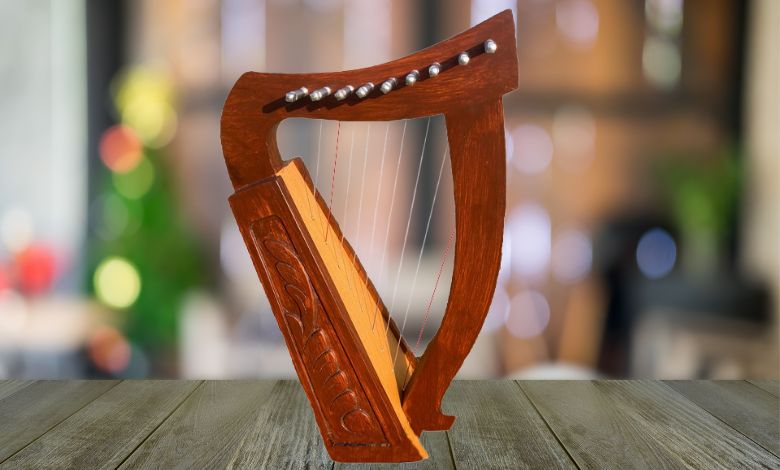
The harp produces sound when its strings are plucked. Plucking transfers energy into the string, causing it to vibrate at a specific frequency, which we perceive as a musical note. The soundboard, at the same time, makes these vibrations loud and projects the rich tones we know as the harp sounds.
A harp is a set of many components including the strings, the soundboard, and the neck. All of them have unique functions. The strings are the most important and vary in thickness and material. Usually, strings are made with nylon, gut, or metal that determines the pitch produced. Thinner, shorter strings create higher notes, while thicker, longer ones resonate with lower frequencies.
The soundboard is a large wooden panel that amplifies the vibrations of the strings. It helps strings to vibrate sympathetically, increasing the volume and fullness of the sound. The neck holds the strings and houses pitch-changing equipment like levers and pedals. The pillar offers structural support to the instrument and completes the harp’s exquisite shape.
Different Harps and Their Traits
A list of countries comprising Scotland, Egypt, China, India, etc., have their own harps. Therefore, most of the countries are using this musical instrument for different eras. If we specifically talk about Lyre Harps, they have close association with Highland culture and are common to see in Scotland, Ireland, and many other countries. Their traits and aesthetics are different from Pedal harps. The story continues with every type of harp, so let us start with lyre harps.
Lyre Harp
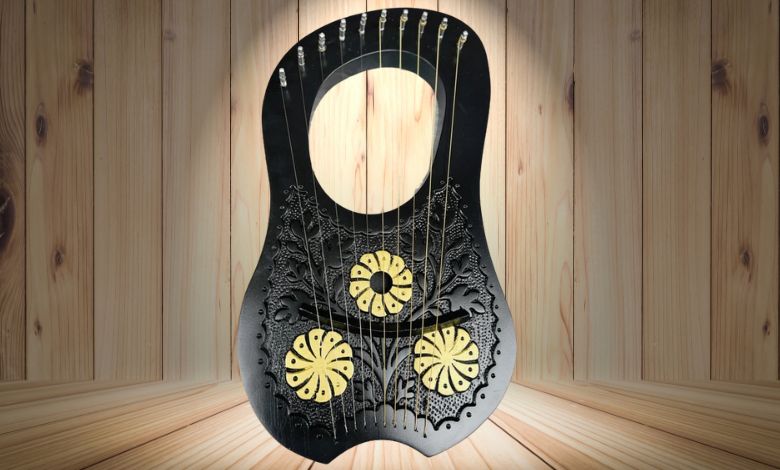
One of the most popular on our list is the lyre harp which is also called “mini harp.” The most notable trait of this instrument is its unique design. The key difference exists in the way that strings are attached to the body of the instrument. In a standard harp, strings enter directly into the soundbox, while in a lyre, they pass over a bridge. As a result, it transmits vibrations to the body resembling a guitar’s sound. If you are looking for exceptional lyre harps, The Utility Kilt Store has multiple options for you including:
Pedal Harp
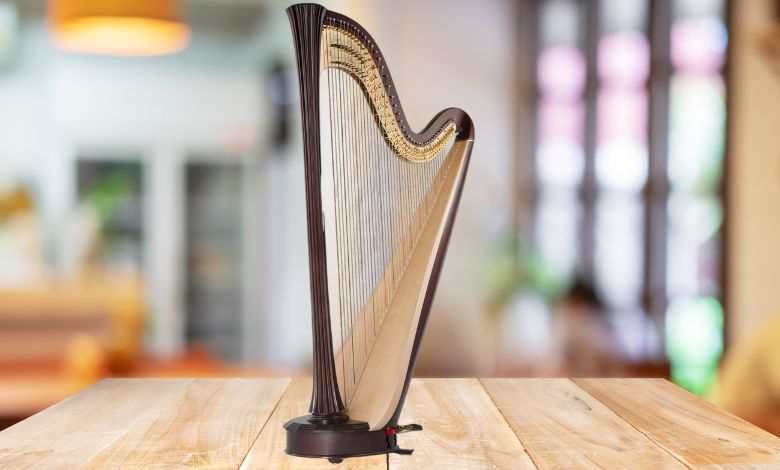
The pedal harp is a large, well-known harp with longer strings and more pitch control. It usually has 47 strings and it is operated by pedals to change the pitch of sound. Every string produces a sound that resembles the sound of a piano. The pedals are usually foot-operated, unlike some smaller harps that use hand-operated levers to change pitch. The instrument has 7 pedals each with a set of strings making it easily operable. Some common products one should consider buying are:
Camac Vendôme
Atlantide Prestige
Camac Trianon 44
Lap Harp

Those who prefer portable musical instruments might consider a lap harp. It is a smaller product that one can manage to keep in his lap as the name suggests. Musicians also know it as plucked psaltery or zither. Usually people new to the harp’s domain and those who work as traveling musicians prefer it. Lap harps typically feature between 14 and 36 strings. Some models include music cards that guide beginners in playing tunes easily. A few popular products that one can consider are:
Scottish 18 Strings Handmade Lyre Harp
19 string, Cherry Blossom Design
HAZE EQ-Enhanced 19-String Mini Harp
Celtic Harp
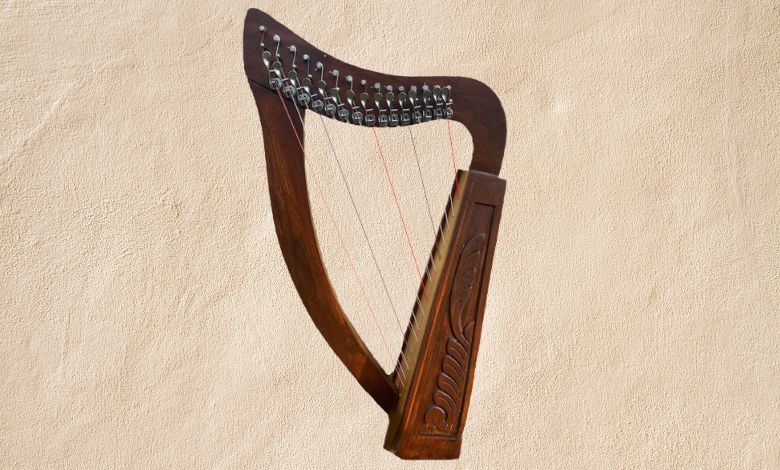
A Celtic harp is also popular as a cláirseach in Irish and clàrsach in Scottish Gaelic. It is a triangular, wire-strung harp traditionally used in Celtic music, particularly in Ireland and Scotland. Its size is smaller than a concert harp. It typically has between 22 and 38 strings, often made of nylon, gut, or metal. However, the number of strings can vary according to the model.
Expertly plucking of strings produces a bright, resonant sound associated with traditional Celtic folk music. These triangular harps are often decorated with traditional Celtic motifs such as shamrocks or other national symbols. Above all, they are of cultural significance in the Highland regions. Below are some exceptional Celtic harps, one must consider buying:
Harp 26 Strings Celtic Lever Harp
Gallic lyre / Celtic lyre
20 Strings Celtic Lever Harp
Arched Harp
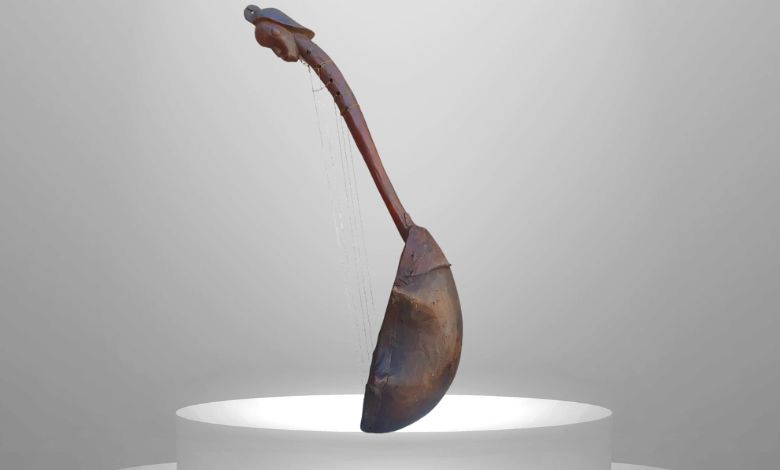
Let’s talk about a harp that features a unique shape, which is also famous as an arched harp. Unlike a frame harp, which has a neck that stands straight, an arching harp has a neck that curves continuously with the body. It leaves an open space between the two ends of the arc or curve.
These harps are also known as bow harps and are available in major parts of the world. This musical instrument has a central pillar holding the strings. Therefore, the curving neck arching away from the soundbox is its primary feature. One must consider an African Arched Harp if he loves to use classical products.
Final Thoughts
Harps are available in many types today, some with modernism while some come with traditional flair. This musical instrument is not just an instrument but an experience helps you hear the music that has been played for centuries. Similar to these, many other types are available today, but you must consider buying from reliable brands like The Utility Kilt Shop where we do not only sell harps but kilts and their accessories!

